Steph W. from SEOPressor


...help you check your website and tell you exactly how to rank higher?


95
score %
SEO Score

Found us from search engine?
We rank high, you can too.
SEOPressor helps you to optimize your on-page SEO for higher & improved search ranking.
By winniewong on November 10, 2016

Blogging is an essential part of any online business strategy. If it wasn’t, you wouldn’t be reading this.
Because it is, you’re reading it for two reasons: you want to know how to do it better, and we’ve blogged about how to do it better because blogging is part of our online business strategy.
Boom.
[bof_display_offer id=19566]
Now we’re all on the same page, let’s get to it: most blogging is bad.
That’s not to say the blog posts themselves are terribly written (though that happens too). Rather, it’s because not enough attention is paid to the process of creating a blog.
This is partly because it’s so easy. WordPress has made creating a website with a blog so intuitive that anybody can do it.
Because it looks great and that attracts people to stick around and check out the content, many people consider that a job well done.
Unfortunately, that’s only a structure. People then populate that structure with a jumble of content, usually just ideas that pop into their heads. As a result, they fall into a few typical traps:

The first problem writers usually encounter when brainstorming a new topic is that it is too broad.
This happens when someone has an idea for a blog, not a blog post, but they write a blog post looking to cover an entire area in summary.
These posts have next to no value to readers, for a couple of reasons.
First, they can only ever be too broad, missing out the details that will make the real difference for a reader.
Second, they lack focus so it’s really hard to be compelling and keep their interest.
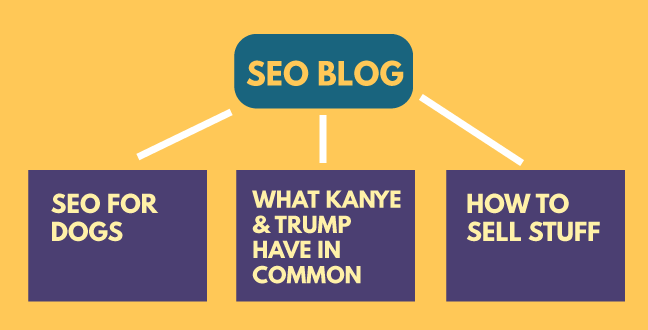
Without proper planning, topics across the blog can vary wildly, giving it no consistency and flow.
Because each post is usually about a huge, broad topic, this creates a blog that takes huge leaps between posts. Because one topic area has been covered in one post, the next post will be in a completely different topic area, and one that may not be relevant to the few readers who stuck around because of earlier posts.
As such, you’re turning audiences away.
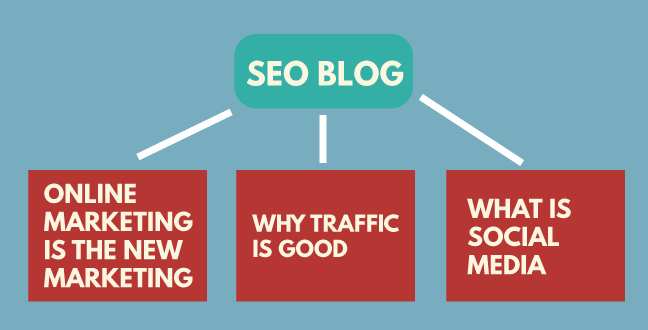
A different thing happens on the other extreme end: Picking up a very specific subject might end up in shallow content that is too obvious.
Most blogs seek to write for beginners, because there are far more people looking for an ‘introduction’ to something than there are people looking for a high level of detail on a specific facet.
However, by ignoring the latter you are ruining the potential of your blog to retain audiences and develop relationships with them.
As a result of this unholy trinity, blogs will perform in the most mediocre way possible, attracting a reasonable amount of new readers long enough for them to discover the content is low-value (even if it’s high quality!), creating a ‘revolving door’ effect of people discovering and abandoning the site.
All this is avoidable.
By throwing a little sand into the wheels and slowing things down, you’ll get used to wringing every drop of value from a single idea.
This will grow your blog, help you proliferate more content and help audiences find more value than ever. It positions you not just as a writer, but as an editor, curating your own content as well as generating it.
The result of this top down approach is greater success for you, and greater reward for your audience.
The top down approach basically means thinking ahead. It allows you to move forward knowing where you’re going next, which means more confidence in your writing and a better appreciation of the journey you’re creating for your audience.
The specific steps below will allow anyone to use the top-down approach to plan at least a full month of content, very likely more, with relative ease.

First, discover a broad topic and think of the points you’ll include in it. But don’t start writing just yet.
This is often what you’ll do when you first come to write a single blog. You’ll think of a broad topic area, hopefully related to the area your website is operating in, and then proceed to write a summary of the different components that make up that topic area.
This is where we start to slow down and spread out the process.
Let’s take ‘thinking’ out of the equation now. Let’s replace it with ‘research’. You may have agenda when you start to write your blog, but you need to put that to one side.
Your readers have agendas of their own, and your broad topic area needs to be something readers are going to be interested in.
As such, you need to do user research to find out what they want and why. What are their problems and challenges, where are their knowledge gaps?
Once you understand this, you can create a topic area that will address those areas.
Bear in mind, if you start researching areas people have a hunger for, it may not overlap with your own knowledge base. In which case, you need to upskill yourself in this area of your work.
There’s no way for your blog to build authority unless you become an authority.
Fortunately, the process of research will reveal all sorts of things to you that will be invaluable in the next steps.

Then, list down the points of the broad topic as subtopics and properly write their titles.
Imagine you’re writing a list article about your broad topic. So, if our website sells chocolate, our broad topic might be “Buying Chocolate”. We want to give people a comprehensive chocolate buying guide, so you’re going to create a listicle with eight items on the list. We might think of things like:
And then write a blog called “8 Great Reasons To Buy Chocolate” .
Well if you do that, you’ve wasted eight articles (or four weeks of content) on a single post.

Your broad topic can then be written as a parent topic. This means that it will include all the points but only briefly explained.
The original idea you had is good, but it can be so much more. I recommend you still write it, but you do so as a ‘parent’ topic.
You introduce what you’re going to talk about for the next month and summarize why it’s going to be exciting and valuable for people, with a promise of future detail.
As you post each of your new blogs (drawn from what would have been summarized bullet points in your original listicle concept), you can then link to them from within the original parent topic, which becomes the equivalent of an index page for your burgeoning guide.
Essay writing 101 goes, “Say what you’re going to say, say it, then say what you’ve said”. When stretched across a month’s worth of content, that same essence becomes top-down strategy.
People can identify that you know what you’re doing, that there’s a definite structure, and a reason to keep coming back and reading more.

From the parent topic, expand each points into a post of their own and link them from the main post.
We had eight points above, and each of them has the potential to be its own post. You could even say the same about each point I’m listing here, and we’ll get to that in the next point. For now, let’s go to our examples and think about how they can be expanded.
How to find the best chocolate: this is about much more than just doing a Google search. Think about the elements that should inform a decision making process:
Then expand on each of these with an exploration of the current market, linked examples, and personal opinions on the importance of each item.
Similarly, “When To Buy Chocolate For People” can be broken down into different occasions:
Each of these can be expanded on with suggestions for chocolates that fit both the occasion and the individual in question, and more.
Every single one of the eight points from your one first post is now a post in its own right.

You can then further expanding the points inside the expanded posts into more posts.
If you can undertake this process once, it shouldn’t surprise you to discover you can do it again.
An example from our own work is our “Make Money From Blogging Series” – we created a single article that summarized the content, then expanded on each of the topic areas in their own post, further breaking down the specifics.
A couple of those choice specifics we then expanded upon again, sometimes in response to requests from our readers and sometimes because we knew there was plenty more to talk about as a result of doing the research for the previous articles.
This idea is sometimes called a garden path, or a cone – because you go from broad to specific over time. The idea is to introduce your beginners to the topic area, then get into greater detail for those already familiar, before exploring details in-depth for the experts. That means that as people continue to read, they continue to be rewarded with ever greater value.
You can do this with our chocolate events post – at each of the occasions you can create an article covering the best choices for that occasion, including the latest releases, recommendations and flavour ideas. That way, content breeds content breeds content, and from a single post you’ve now got months of content.
So, that’s the process of using a top-down approach to generate ideas for content. You can map these out into a calendar very easily to ensure you keep to the schedule, teaching your audience to expect content at regular intervals will train them into revisiting your site to read the latest information.
Now you understand the how, you may be wondering about the why. We’ve touched on some of the advantages already as a function of describing the process, but let’s break it down and get specific in case you’re still undecided.
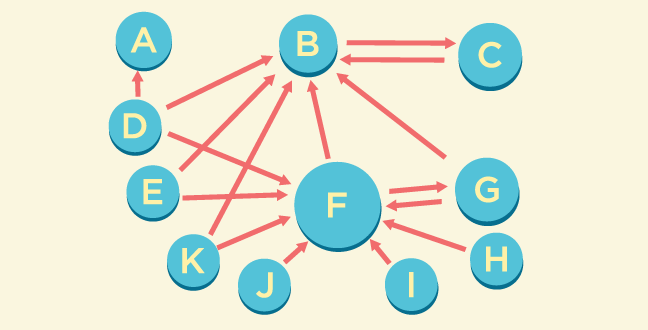
Creating topically-related posts makes it easier to interlink different parts of your blog.
If I can divert you into brain chemistry for a quick metaphor, you want to think of your blog a lot like a brain. Each topic area is like a cluster of neurons, and the more connections you have between neurons the better the brain performs, and the more information it can hold.
By connecting and interconnecting all the articles in a topic area to one another, you create myriad pathways for customers to take, which they can choose according to their tastes, interests and priorities.
Think of it like one of the old choose-your-own-adventure books. You’re creating reward systems that offer regular new discoveries and pay offs. This enhanced complexity is healthy for all kinds of SEO reasons, but the main advantage is the difference it makes to user experience.

By having a series of related contents, readers will jump from one content to another, spending more time understanding the big topic.
One thing everyone knows about Wikipedia is how easy it is to get lost within the site and spend hours upon hours finding out about related topics, ending up somewhere completely unrelated to where they started.
This happens because humans are curious, and seek reward for that curiosity compulsively.
If you can structure your blog as robustly as Wikipedia has structured their encyclopedia, you’ll be able to retain readers for longer and longer periods on your site. The longer people stay, the more search engines perceive the value of the site, and reward it in the rankings.
This leads to more people visiting the site, who themselves are more likely to make long stays.
Our aim was to take one broad, low-value article and convert it into eight high-value, specific articles. In doing so, that’s far more material for people to get through and far more time spent poring over it. This is great news for you.
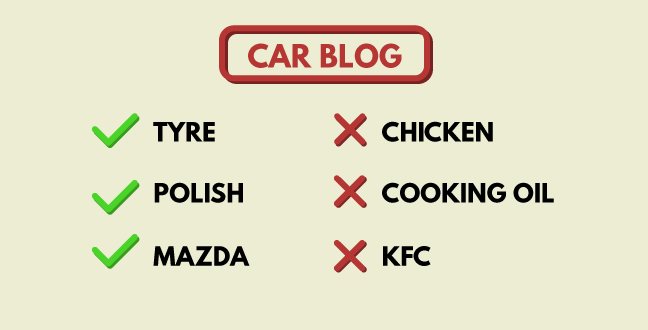
By writing thematically consistent posts, you’ll also strengthen the keyword association with your site, making it easier to rank.
If you keep returning to the same topic area over and over and over again, every piece of content will reinforce the association between your blog and that topic area.
Each article provides an opportunity for you to hit your keywords, and what’s more, it gives you more articles that will prove relevant to search results, particularly for long tail keywords.
A top-down approach makes sure you don’t exhaust your contribution to the topic area with just one post. Yes, it puts the expectation on you to delve deeper with research, but the reward for that is you becoming what you need to be to succeed in the competitive online world.
Once you’ve become a real authority in your area, you’ll find every area of your business improving, not just the content you use to promote it.
Being strategic strengthens the connections you have to the industry, making you quicker to respond to changes, better able to identify opportunities, and ultimately more able to influence the industry to reflect your ideas of it in the long term.
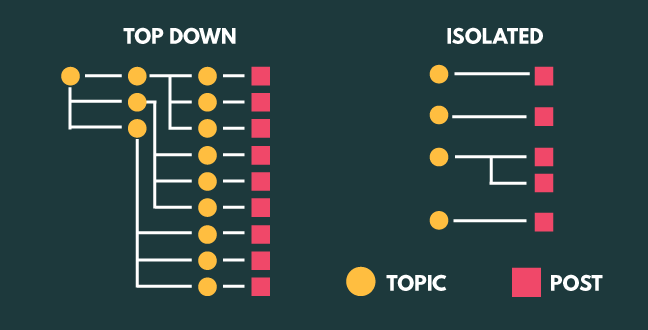
Compared to isolated content planning, you’ll get more posts out of a topic by using a top-down approach.
I’ve been doing this a while, so I managed to come up with a plan for eight weeks of content for a chocolate blog (an industry I’ve never worked in) in a couple of a minutes, just to use as an illustrative example in a blog.
Once you’ve done it a few times this way of working gets much easier, and it’s so empowering and time saving for you.
Instead of agonizing over what your next blog post should be, that work is done for you, way ahead of time. It gives you direction and focus, and using a ‘parent’ post also pledges you to complete the content you’ve devised, meaning it takes an element of choice away – this is often vital for entrepreneurs who have to make constant decisions about how best to use their time.
We are creatures of connection, and so it is almost impossible to think of a broad topic area without thinking of related fields. Let your mind wander in that way – be free in your associations and you’ll quickly find a new broad topic, which itself will lead to another month’s worth of content.

By pre-planning your content, you’ll save time thinking of new topics and you can spend more time writing them.
Producing content is always far easier when you know what the content is going to be.
That might seem like a silly and obvious thing to say, but many people spend a lot of time writing in an exploratory manner, simply putting thoughts down on the page, before discovering what it is they’re really trying to say. They then have to spend a great deal of time rewriting and polishing their draft before they post it.
With all the decisions made up front, it makes it far easier to understand the focus of each piece. It also takes the pressure off you as a writer to have to encapsulate a whole world of wisdom in a single post.
By breaking it down into more bite-sized chunks, you can focus on one thing and get it done quickly and effectively.
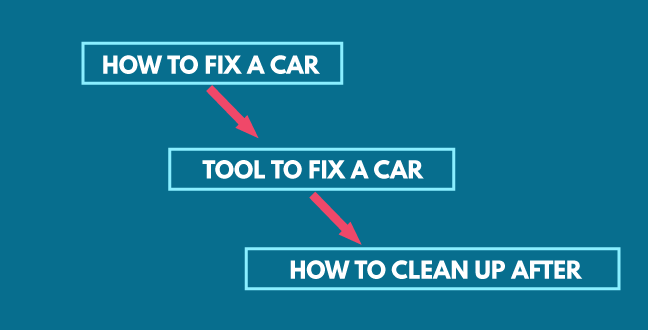
As your readers move from one to another related posts, they get a better flow of the information presented.
Continuity, or flow, may seem like something of an abstract concept, but it’s an incredibly important one in designing a compelling user experience. Let me use film to give you an example.
In film, editing techniques have been perfected to provide an unobtrusive sense of flow from one shot to another, such that you feel like you’re being told a story. These conventions are so well established that when people fail to use them, it really sticks out.
There are whole sites dedicated to continuity and editing errors in films, which break the illusion of the seamless story.
If your content doesn’t flow from one piece to the next, that’s the same as a bad edit in a film. It presents a barrier to the brain, a cut-off that create a sense of mental whiplash. In the time spent to recover from that, people can navigate away, or turn against the website for undermining their focus.
Strategic content planning guarantees you can create a sense of flow between one post and the next. That makes sticking around for longer sessions as easy and rewarding as possible for people.

As each post is more focused, they can be packed with more useful information rather than laying the foundation with introductions and definitions.
I’ve talked a lot about value throughout this post but I haven’t really defined it. Allow me to rectify that now.
When I talk about value, I’m talking about the reward the reader gets from investing their time in going through the content. It’s the lesson the learn, the technique they can use, the thing that is actually going to make a difference.
The value is what’s changed between when they read the title, and when they read the last line of the content.
By narrowing the focus of every post to one thing, it means you can get into deep detail on it, and really push to maximize value for the reader. Top down planning should mean that this comes out automatically, but it’s also worth bearing in mind as a mission statement for each of the pieces you write.
Focusing on value can also help you narrow down the ideas you’re going to focus on, as well as helping you organise your sub-topics for individual posts into a cohesive narrative.
Evaluating value like this will show you what will have broad appeal, and what will be extremely rewarding but only for those who are already at an advanced level of knowledge. Lead with the broad and move toward the specific.

Even the same topic can be used to address different pain points of the readers.
Freedom from pain is what everyone wants from life. The pain of not knowing, the relief that discovery brings, is what has driven us to become the most advanced species in the observable universe.
Never underestimate the power you have to take pain away from your readers by sharing your knowledge. Never underestimate the effect that can have. The loyalty it can generate.
Think of pain points as questions that are left unanswered in the reader’s mind. When we came to write about how to make money from blogging, we could imagine the kind of questions we were going to be asked. Each of those questions then formed the basis for a blog, where we answered that question as thoroughly as possible.
As with conversation, questions often lead to more questions, and those in turn generated new content for us to create. By addressing pain points, you are removing doubt from the reader’s mind, empowering them, and making them believe your brand can make a difference to their lives by grounding that belief in concrete evidence. From there, converting their actions into sales should be far easier.
So, there you have it. A means to plan, organize and deliver your content that simultaneously enhances the quality and value of that content, and will help you both develop and retain your audience. With all these advantages, you have to wonder why you’d do anything else.
Updated: 9 December 2025


Save thousands of dollars (it’s 100x cheaper)

Zero risk of Google penalty (it’s Google-approved)

Boost your rankings (proven by case studies)
Rank High With This Link Strategy
Precise, Simplified, Fast Internal Linking.
